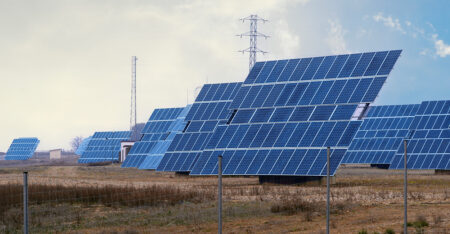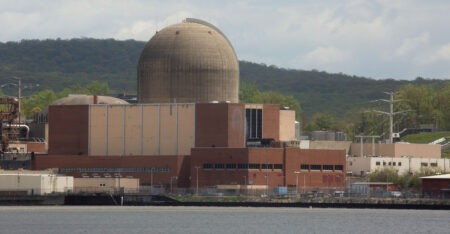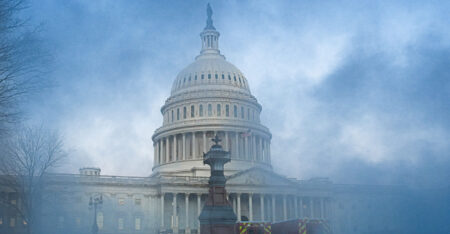Except for a modest number who go by ferry, almost everybody who travels between Marin County, California, and San Francisco does so by crossing the Golden Gate Bridge in some kind of vehicle.
They may do it in a car, a truck, a bus, or on a motorcycle—unless they are President Joe Biden.
If you are Biden, you do not cross the bridge at all—and you do not take a ferry. Instead, you take a helicopter—even if you are only traveling the short distance from Crissy Field, which sits just below the bridge in San Francisco, to Mackey Field, which is about 10 miles north of the bridge at the College of Marin.
The San Francisco Standard published an article on June 22 that reported on how surprised some local residents were by how Biden took that trip on June 20.
“Though news reports had just announced that President Joe Biden would be coming to Marin County for a campaign fundraiser during his two-day trip to the San Francisco Bay Area, locals thought his motorcade would cross the Golden Gate Bridge from San Francisco and drive out Sir Francis Drake Boulevard like everyone else,” said the Standard. “No one expected presidential aircraft to land on a soccer field in the backyards of Larkspur—especially a few days ahead of the official visit.”
“From the landing field in Larkspur,” the Standard reported, “Biden drove just a few minutes to the campaign fundraiser at an estate in Kentfield, an affluent, unincorporated Marin County community of 7,400, where the average home value runs $2.7 million, according to Zillow.”
What did Biden talk about when he addressed this posh crowd? Among his main themes were global warming and environmentalism.
“How many of your friends who were doing well didn’t think there was much to global warming?” Biden asked his contributors, according to a transcript posted by the White House.
“Well, all of a sudden, I flew over more territory with the governor in a helicopter, and other governors throughout the country, from Arizona and New Mexico, all the way up to the state of Washington state and Idaho and the rest,” said Biden. “More timber has burned to the ground than comprises the entire landmass of the state of Maryland.”
“And people are no longer wondering whether or not we have a problem with the environment,” said Biden. “People are stepping up. And we were able to pass legislation for $368 billion for environmental investment.”
Biden then explained that he was seeking to put a significant part of the United States off-limits to human development.
“And I made a commitment that 30% of all our lands and all our waters are going to be in conservation by the year 2030,” said Biden. “We’re well on our way to doing that. And that’s going to make a profound impact on what we have and what we deal with in terms of the environment.”
When this fundraiser was over, Biden helicoptered back to San Francisco—and attended another fundraiser, where he called for moving America away from fossil fuels to wind and solar power.
“I think we’re going to be in a position to have 100% clean energy—and I’ll talk about it if you want to talk about it later—by … 100% clean energy by 2035 in the United States. One hundred percent,” Biden told these contributors, according to a White House transcript. “And I explain why: All-electric-vehicle future, 500,000 charging stations.”
“By the way,” Biden said, “it’s a hell of a lot cheaper: Solar is cheaper. Wind is cheaper. It doesn’t cause cancer.”
He then explained the argument he had made to the International Brotherhood of Electrical Workers. “Well,” said Biden, “I spent a lot of time with the IBEW, and I said, ‘Guys, your future lies in solar and wind and—and alternative energy. It doesn’t rely on the fossil-fuel industry.’”
Toward the end of this talk, Biden explained one of his ultimate goals. “[W]e have to significantly eliminate the use of fossil fuels,” he said. “But, by the way, you can’t eliminate it all right now. It doesn’t make even sense to do it all right now, even if you could—No. 1—but continue to fundamentally change the mix.”
What is the current mix?
According to the June edition of the federal government’s Monthly Energy Review, the United States produced a total of 102.936 quadrillion British thermal units (Btu) of energy in 2022. Of this, only about 1.8% (1.870 quadrillion Btu) came from solar power sources, and only about 3.7% (3.845 quadrillion Btu) came from wind power sources.
By contrast, about 79.5% (81.485 quadrillion Btu) came from fossil fuels (including 24.662 quadrillion Btu from crude oil; 37.106 quadrillion Btu from dry natural gas; 12.043 quadrillion Btu from coal; and 7.674 from liquid natural gas).
An additional 7.8% of the nation’s energy supply in 2022 (8.046 quadrillion Btu) came from nuclear power plants.
The combined 89.53 quadrillion Btu in energy that the United States derived from fossil fuels and nuclear plants equaled about 87% of the nation’s total energy supply.
If you add the 2.317 quadrillion Btu in energy that the nation derived from hydroelectric power sources in 2022 to that derived from fossil fuels and nuclear plants, it equals 91.848 quadrillion Btu or about 89.2% of America’s total energy supply.
For wind power to make up for the power lost by shutting down America’s fossil fuel production, wind power facilities would need to produce about 21 times as much energy as they do now. For solar power to make up for the loss, solar energy production would need to increase by more than 43 times what it is now.
How would that work with Biden’s vision for conserving land in the United States?
COPYRIGHT 2023 CREATORS.COM
The Daily Signal publishes a variety of perspectives. Nothing written here is to be construed as representing the views of The Heritage Foundation.
Have an opinion about this article? To sound off, please email letters@DailySignal.com and we’ll consider publishing your edited remarks in our regular “We Hear You” feature. Remember to include the url or headline of the article plus your name and town and/or state.
Read the full article here














